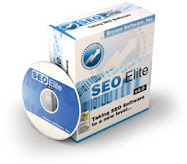Are you familiar with the ever-popular Will It Blend campaign from Blendtec? If not, you’re depriving yourself from one of the best viral marketing campaigns ever.
George Wright, the Vice President of Marketing and Sales at Blendtec, gave a keynote at PubCon, in which he explained the strategy behind their campaign. In the above WPN video, Barry Schwartz of RustyBrick, Inc. tells how Blendtec had to go out on a limb to get their brand name out there.
Blendtec offers high performance blending and dispensing equipment for restaurants, but also has home editions. George realized their need to raise brand awareness. He knew they had great products, but no one knew about them. The concept was there for the “will it blend” idea, but they didn’t have a big budget to do a commercial.
George took his budget of $50 and bought the domain name willitblend.com, a lab coat, a six-pack of Coke, and supplies to blend. The first experiment included marbles, a rotisserie chicken, a rake, and a McDonald’s value meal. Their small budget only allowed them to use social media outlets, so they launched their campaign over YouTube.
Now, some 70-75 videos later, they’ve made history. Blendtec blends iPhones, iPods, and even rake handles just as George did in his keynote address! The only item that has been too powerful for them to blend is Chuck Norris…
Since their campaign launched, Blendtec’s sales have been up 700 percent. George realized Blendtec’s need to prove that their product was better than the others by actually showing it instead of simply talking about the mechanics. Viral marketing is creating fun content that people want to talk about and putting it into social media sites.
Ironically, Blendtec pitched the Food Network prior to the campaign with no luck, but after the campaign began, the Food Network contacted them.









